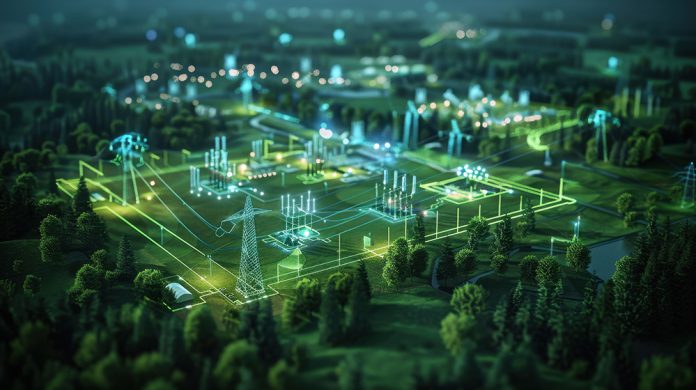Nuclear, hydrogen and UHV grids are ‘non-negotiable’ for energy security, says Dr Sivachidambaram Pichumani of ESCP Business School.
The UK and Europe are standing at a crossroads in energy transition. There are strong commitments to ambitious net-zero targets, yet the current path leaves businesses and consumers exposed to instability and rising costs. Recent crises have already revealed how fragile energy systems are when overdependent on imports or intermittent renewables. Unless leaders act quickly to diversify and stabilise supply, the risks to competitiveness, investment, and long-term sustainability will only deepen.
A new whitepaper from ESCP Business School’s Energy Management Centre, authored by Dr Sivachidambaram Pichumani, argues that three technologies must be urgently deployed to secure Europe’s energy future; Small Modular Reactors (SMRs), Ultra-High Voltage (UHV) transmission lines, and green hydrogen storage.
Why business leaders should care
Energy is no longer a background issue, but a core strategic concern. Without a reliable and affordable supply, businesses face volatile costs, squeezed margins, and even the threat of relocation. For energy-intensive industries like aviation, chemicals, steel, and data centres, dependence on an unbalanced energy mix exposes them to short-term shocks that undermine long-term planning.
On the other hand, companies that secure 24/7 certified clean energy will reduce their cost of capital, stand out in competitive tenders, and gain reputational advantages. Early adopters of SMRs, hydrogen, and advanced grids will not only strengthen resilience but also unlock new opportunities in premium energy markets.
Opportunities for innovation and investment
Across the value chain, the opportunities are significant. At the upstream level, demand for components in HVDC cables, electrolysers, and catalysts will open high-margin markets. Midstream, the race to build gigafactories for SMRs and electrolysers will deliver economies of scale. Downstream, integrated projects such as hydrogen valleys, offshore energy islands, and digital compliance platforms can connect infrastructure with end-use industries in ways that create long-term value.
We are already seeing progress. Hydrogen valleys are taking shape in Rotterdam and Antwerp. The North Sea is seeing pilots in HVDC interoperability. The UK and Sweden are advancing modular SMR designs, while initiatives like Energy Tag are developing the standards for hourly energy certification. These early steps show what is possible if we double down on coordinated investment.
Why diversification matters
Wind and solar are vital, but relying on them alone creates risks. Long periods of low wind can leave systems exposed, and seasonal variation cannot be fully balanced with batteries. Businesses depending solely on renewables face unpredictable costs and gaps in supply.
A diversified approach is essential. SMRs can deliver consistent baseload power and industrial heat. Hydrogen storage can absorb surplus electricity into storable, tradable molecules. UHV and HVDC lines can knit together energy resources across the continent, moving power efficiently from where it is generated to where it is needed. By combining these three technologies, Europe can turn intermittency into resilience, cutting curtailment, reducing hydrogen costs, and lowering operating expenses through smarter digital optimisation.
The role of policy
Technology alone is not enough. For these solutions to scale, Europe needs the right policy frameworks. Stable financing models such as Contracts for Difference (CfDs) and Regulated Asset Base (RAB) schemes will lower the cost of capital and attract private investors. Harmonised standards for certification, cybersecurity, and interoperability will make cross-border systems viable. Streamlined permitting could shorten project timelines by more than a year, while EU-wide frameworks will ensure national efforts add up to a coherent strategy rather than a patchwork of disconnected projects.
Crucially, businesses and policymakers must collaborate. Shared infrastructure ventures, regulatory sandboxes, and cross-border data trusts are just some of the ways this can happen. By working together, countries can accelerate deployment and reduce risk for investors.
Practical steps for businesses
What can companies do now? For SMEs, piloting on-site electrolysis, joining hydrogen valley consortia, and embedding basic cybersecurity standards are practical starting points. For larger corporations, securing long-term offtake contracts for SMR steam or hydrogen, pre-booking scarce HVDC components, and preparing for hourly certification, will build resilience. Procurement and sustainability teams should integrate clean energy requirements into supply chains, stress-test for volatility, and prepare systems for audit-ready certification.
By acting early, businesses can influence policy, secure scarce resources, and strengthen their market position while competitors hesitate.
A vision for 2035
If the UK and Europe act decisively, the energy landscape by 2035 could look radically different. Clean energy would be certified by the hour, creating a transparent and reliable system that attracts global investment. Europe could even export bundled energy and certification services worldwide, becoming a leader in both climate and competitiveness.
But if leaders delay, the opposite scenario is just as plausible; stranded renewable investments, persistent volatility, industrial relocation, and the loss of standards leadership to other blocs.
The time to act is now
SMRs, advanced grids, and hydrogen storage are not optional extras but urgent necessities. The technology, industrial base, and policy levers to deliver a resilient energy system already exist. What is needed now is political will and business leadership to seize the opportunity.
The choice is stark. We can either build a diversified, secure energy future that underpins competitiveness, or risk instability, rising costs, and a shrinking industrial base. The time to act is now.




